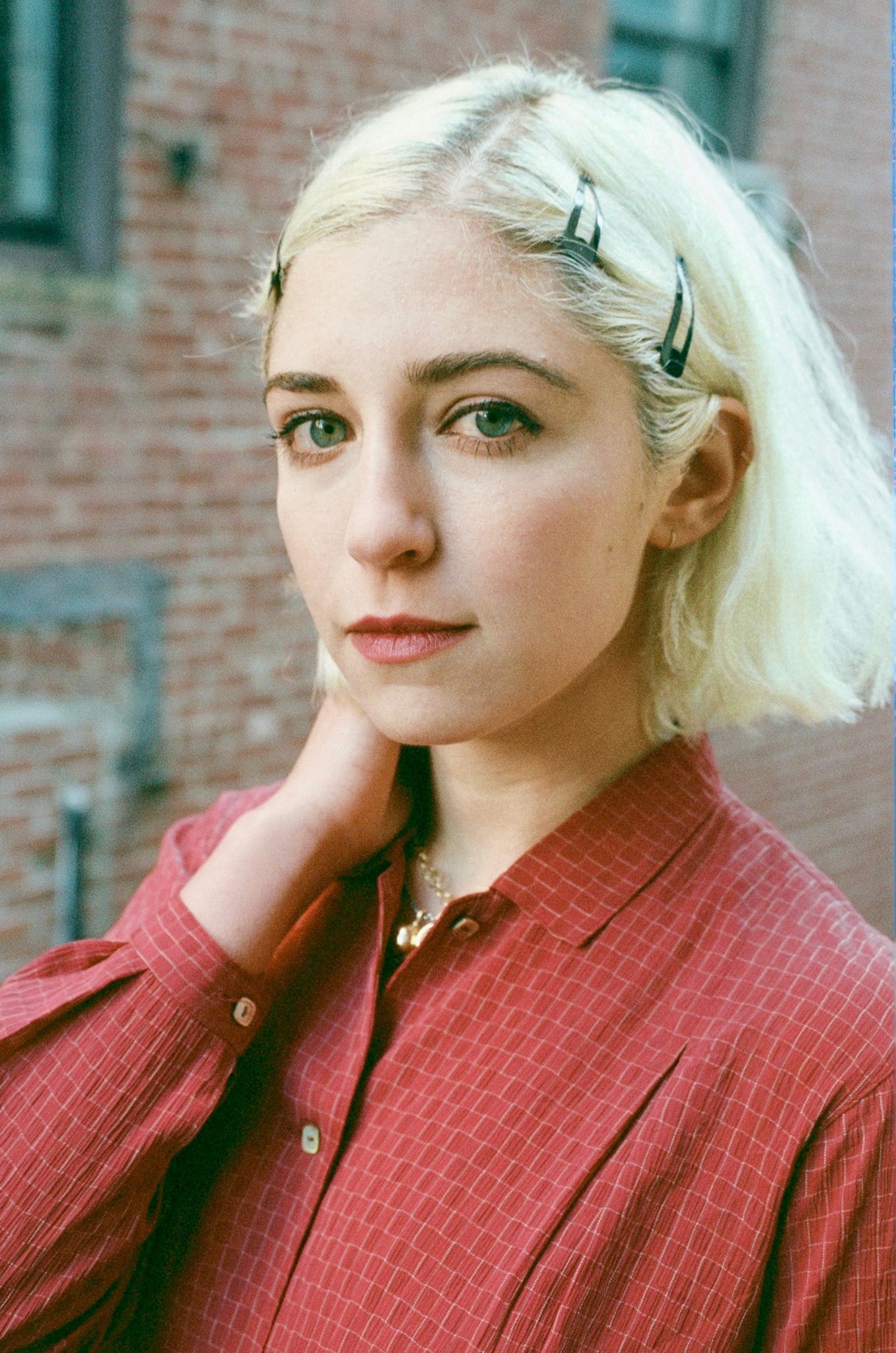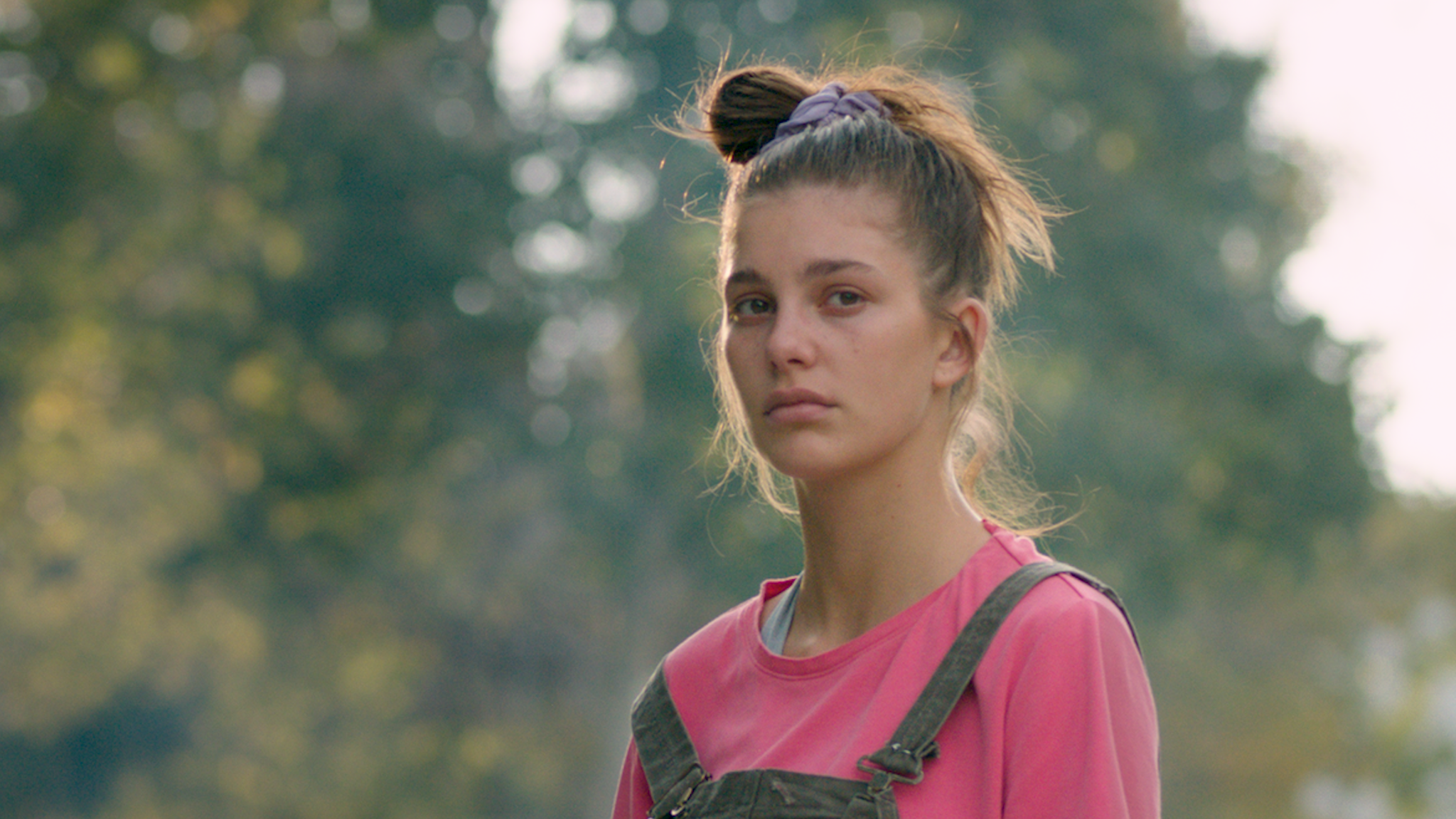
Ruby Rose
Annabelle Attanasio makes an impressive directorial debut with Mickey and the Bear, following three shorts from 2014–2016 and a career as an actor that began when she was 11. Set in the small, economically ravaged town of Anaconda, Montana, it explores the difficult relationship between Mickey Peck (Camila Morrone) and her father Hank (James Badge Dale). A veteran haunted by his experiences in the Iraq War, Hank uses Oxycontin and alcohol to keep his many demons at bay, but his self-destructive behavior forces Mickey to act more like his mother than a typical teenager. Her friend Wyatt (Calvin Demba) is a brilliant pianist who gets the opportunity to leave Montana and study in San Francisco. Hank’s activity grows more and more dangerous, pushing Mickey to leave him and her town behind.
Attanasio captures the atmosphere of Anaconda, using stylized lighting to depict her interiors. Mickey and the Bear has a somewhat old-fashioned feel, closer to directors like Victor Nuñez than the “elevated horror” or “look ma, I’m so woke” projects that have recently filled Sundance, and it gets terrific performances from Morrone and Badge Dale. It’s playing now at Film Forum in New York City, and it opens November 22 at Landmark’s Nuart Theatre in Los Angeles.
StudioDaily: Did you talk with the actors about the characters’ backstory, even if it doesn’t appear in the film?
Annabelle Attanasio: We went into backstory pretty extensively. I always try to give the actors what they need. For Badge, he was really confident in terms of his process of crafting backstory on his own. With Cammy, we crafted a backstory together. The two of them also got together in terms of getting on the same page in terms of facts about their own life.
The setting also seems quite different from what I know about your life. What was your entry point into this story?
It began from a personal place of wanting to tell the story of a kid who grows up too quickly. That came from my own experience. A story of a child having to become a parent is something we don’t see too often in movies. The Montana context and the parent being a veteran added something in terms of codependency and a young girl having to take care of his mother. If he were a veteran, it would add more to his needs.
Had you traveled to Montana before researching the film?
Yes. Four years ago, we got a grant from a university to go to Anaconda, Montana. We chose to go there because of its veteran population, which is pretty prominent out there even though the town is pretty small. They have so much pride and wonderful humor in the face of the fact that they’re shrinking rapidly. After my first trip, I knew it was important to shoot there. Since then, I’ve also traveled to Montana quite a bit.

Camila Morrone and James Badge Dale in Mickey and the Bear
Conor Murphy / Utopia
James Badge Dale tends to get typecast as cops and other kinds of authority figures. Were you riffing on this?
I saw Badge in Flight. He only has one scene, as a cancer patient, but he has such levity, light and humor to him. I knew then that he could play this character’s whole emotional range. I also knew that from playing so many soldiers, he understood that mentality and had done a ton of research for other projects. When we met, it was a very different project for him, but it was a very easy kinship. I cast him more for his complexity than for what he had done in the past.
I don’t know his real background, but he’s one of the few American actors his age who is convincing playing grizzled working-class men.
I agree. When I met him in person, he very well could’ve been someone we saw getting in a fight in a back alley in Anaconda and cast off the street. He had this authenticity. He lives his life without being immersed in Hollywood. He comes from a background where he was a hockey player and carpenter.
There’s a bright purple light in certain interiors, especially Mickey’s bedroom. Did you set out to contrast the different spaces through lighting?
I was drawn to using neons and vibrant colors to reflect different moods and tones. Hank’s bedroom is golden and red, Mickey’s room is violet, the space where they slow-dance into the night is pink and green. For me, because film is a visual medium, it’s really important to use color and not shy away from it.
There’s also a scene at a fair where the camera pirouettes around Mickey, Hank and Wyatt for about 90 seconds. Was that done on a dolly?
Our camera was on a track, with the three actors in a center. It surrounded them. Our operator was behind the camera, with the key grip pushing him. There’s no circular track to be found in Montana, so we had to get really crafty. We were very lucky that day.

Mickey and the Bear
Conor Murphy / Utopia
How did you choose Conor Murphy as your D.P.?
Well, Conor is a year older than me, and I think this is the first movie he’s ever shot. What really drew him to me is his focus on stories and characters over visuals. He always puts himself in the mindset of the characters. That’s what I do as a writer and director as well. That’s why I decided to work with him — because when I met him, he asked me about the characters’ hopes and fears. The D.P. should be working with the actors, not at odds with them. But often, they separate himself or herself from that process. I think it’s a really beautiful thing when you are very invested in what story you’re trying to tell.
How long did the editing take?
We wrapped at the end of September. We edited from October into January. We got into SXSW and locked picture at the beginning of that month. So it was really short, maybe 10 weeks. The order of the scenes never changed, but we kept plucking scenes out and stripping scenes down. There was just a handful of times when scenes moved. We found it interesting to see what happened when we did that.
When Wyatt gets accepted into the conservatory in San Francisco, I immediately thought about how a one-bedroom apartment there now costs almost $4,000/month. There is a promise that the kids can escape this repressive, dead-end town, but gentrification has made it harder to achieve. Were you thinking about that, particularly about the futures of the characters and Anaconda itself?
You bring up a really interesting point. It’s a very challenging time for the youth of America, especially if you’re not coming in with any sort of cushion of money for college. In terms of the fate of Anaconda, that town exists because of the faith of its people to exist. It’s shrunk in size after they ran out of copper. What’s really important about this movie and movies about small communities is to create awareness about them. There are so many places like Anaconda in this country that are disregarded.

James Badge Dale in Mickey and the Bear
Conor Murphy / Utopia
It’s striking how many of Hank’s tattoos aren’t even artwork, just words in cursive written into his body. Are any of Badge’s tattoos real?
A lot of them were. In his films, he doesn’t particularly like to show his tattoos but for this one, he was willing to do so. We had this beautiful custom pinup tattoo on his forearm which was a symbol of his late wife. And then we might have added one more, but the others are his. We also added some prosthetics, like a knife wound over one eye. It’s a combination of Badge and the character.
The film made me think of the kind of films that were popular at Sundance before Tarantino became big and the idea of “indie” became commodified, like John Sayles. Were you thinking of that period?
Sayles’ book Thinking In Pictures taught me a lot about direction, but I was thinking more about films of the ’70s. Paper Moon is one of my favorite father/daughter dramas. I love Ordinary People. That’s one of my favorite films and one of the best immersions into family life I’ve ever seen. I tried my best, in terms of the script and shooting style, to emulate that era more than the era I’m in now. I guess in a general way, I appreciate the crafted way films of that time feel, where a scene might have two lines of dialogue but you can tell it was edited down from four pages. Films of that time consciously guide you and feel smartly edited.
Your background lies in acting. Was it always your plan to become a filmmaker?
It was not. I acted for many years, both recreationally and professionally. But then I grew tired of being looked at as someone who had no creative ideas to offer. As an actor, a lot of the time your ideas aren’t taken into consideration. I wrote this script over the course of years and thought “I should direct this, because who else is going to want to?” I live for actors. I live for nurturing performances and creating characters that allow them to do their best work.

Camila Morrone in Mickey and the Bear
Conor Murphy / Utopia
Did you feel particularly patronized as an actor because you’re a young woman?
Absolutely. Especially working in television, where the people in charge are men over 50. You’re looked upon as cute if you have any ideas. I felt extremely condescended to, but the feeling of wanting to prove somebody wrong ultimately fueled my desire to fundraise this film and get it made. Young people, and young women in particular, are some of the most intuitive people in this industry, so why wouldn’t they want to engage with us about our ideas?
Your father, Paul, is a screenwriter and TV showrunner. [He wrote the script for Quiz Show and created Homicide: Life on the Street and, with “Dr. Phil” McGraw, Bull.] Did that influence you in any particular way or help you to be in a family where he was an artist in the same medium?
I never really thought of myself as a filmmaker then, but looking back, I was constantly filming my siblings with my dad’s camcorder. I thought that if women wanted to be in the business of storytelling, we had to be actors. When I began writing the script, doing labs for this movie and getting grants, my dad was my biggest supporter. He said, “You were meant to do this. You’re a fantastic writer.” It’s hard to understand how meaningful that can be to a young kid who doesn’t know where they were meant to wind up. It’s not so much that he is a writer. It’s more that he is really supportive of me seeking out this path.
Mickey and the Bear is now playing at Film Forum in New York, with more playdates to follow.
Crafts: Shooting
Sections: Creativity
Topics: Project/Case study Q&A annabelle attanasio conor murphy directing montana
Did you enjoy this article? Sign up to receive the StudioDaily Fix eletter containing the latest stories, including news, videos, interviews, reviews and more.









